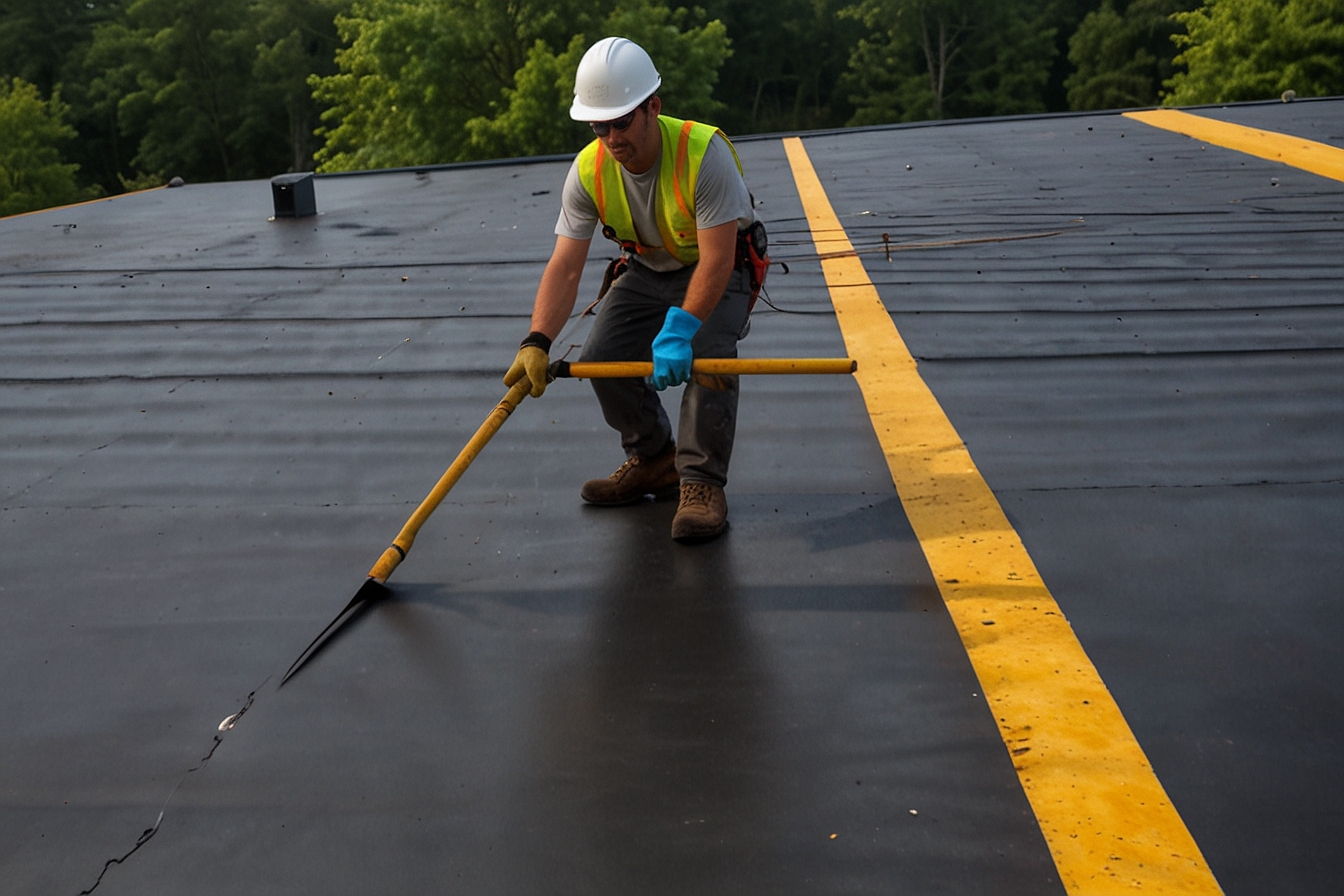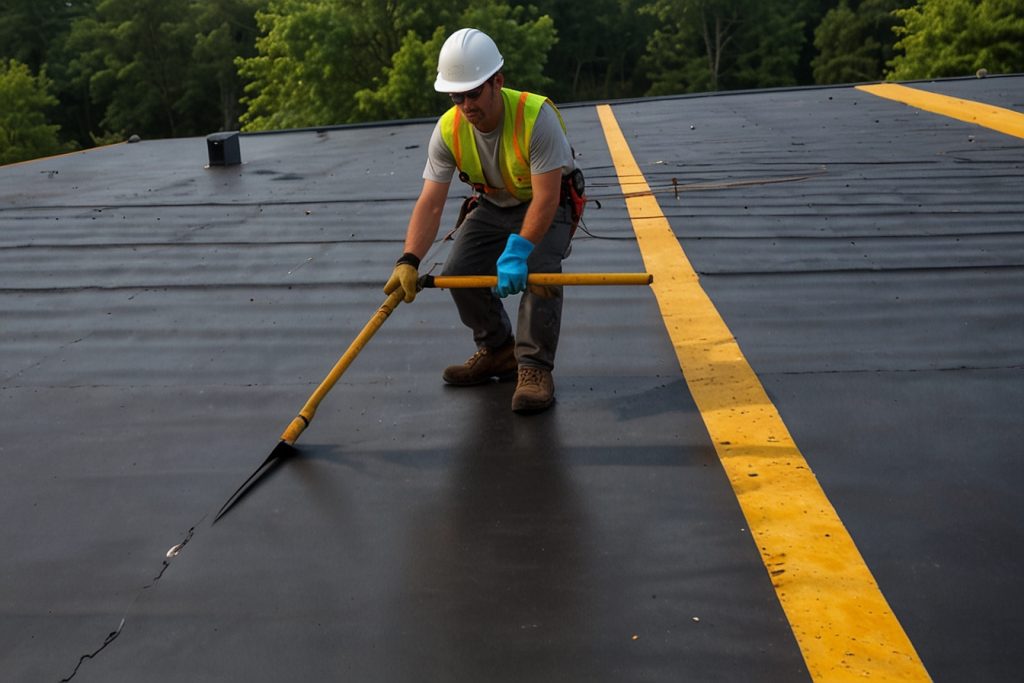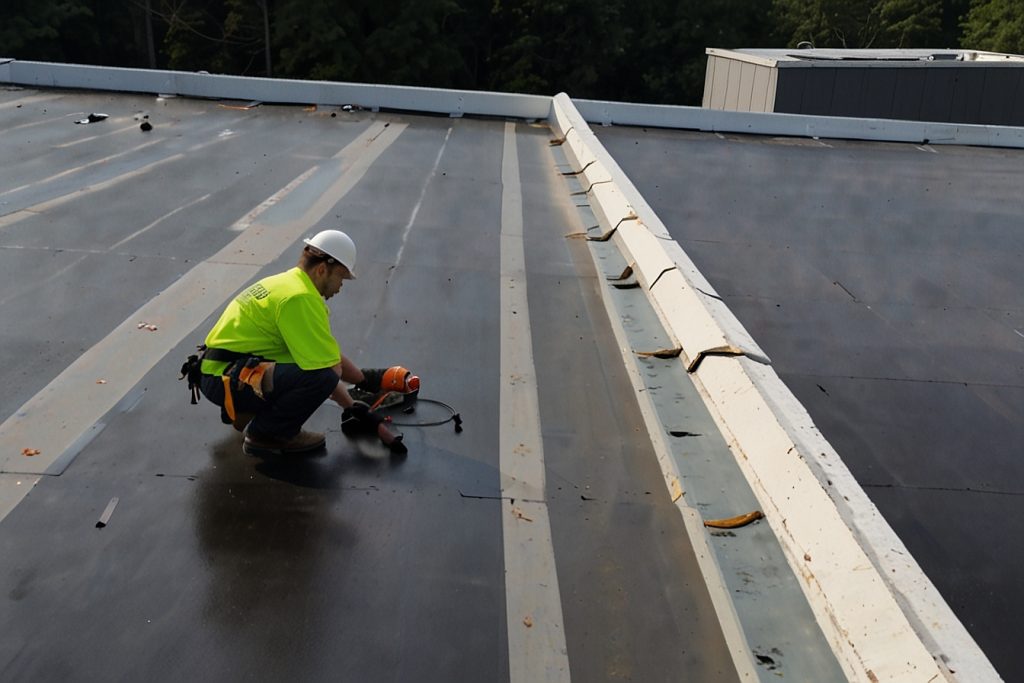
How Much Does a New Commercial Roof Cost: Factors and Price Ranges ExplainedHow Much Does a New Commercial Roof Cost: Factors and Price Ranges Explained
Determining the cost of a new commercial roof is a critical concern for business owners and facilities managers looking to protect their investment. The price varies significantly based on a range of factors.
These factors include the size of the roof, the materials chosen, the complexity of the installation, and the location of the property. As a general rule, commercial roof replacements can cost anywhere from as low as $5,000 for small properties with less expensive materials to upwards of $50,000 for larger buildings or more premium options.
Charles Jimerson,the founder of CJ Commercial Roofing NJ had this to say, “When I evaluate the expense of a commercial roofing project, I consider the type of roofing system that will best suit my building’s needs. Choices can range from traditional asphalt shingles, which are on the more affordable end of the spectrum, to higher-end materials like metal or tile.”
Factors such as the building’s height and accessibility, the roof’s slope, and local labor rates also play a significant role in the final cost.
Additionally, while factoring in the initial outlay, I also think about the long-term value of the new roof. The right roof can increase a commercial property’s energy efficiency, enhance its aesthetic appeal, and provide robust protection against weather elements. This makes a new commercial roof not only an immediate expense but a strategic investment in the business’s future.

Factors That Influence Commercial Roofing Costs
When considering the replacement of a commercial roof, it’s essential to understand the diverse factors that contribute to the overall cost. My aim here is to provide clarity on these cost-influencing elements.
Roof Size and Complexity
The overall size and square footage of the roof are primary determinants of the cost. More extensive roofs demand greater quantities of materials and labor, raising the total expense.
Additionally, the complexity of the roof structure, including features such as slopes, angles, and roof access, can significantly influence costs. This is due to the increased difficulty of installation and potential for complex roof system requirements.
Material Types and Choices
The choice of materials for a commercial roof impacts cost substantially. Options like single-ply membranes, EPDM, or metal roofing come with varying price tags and lifespans.
A high-quality material may have higher upfront costs yet can offer better durability and weather resistance. For instance, multi-layered built-up roofs or heavier ballasted systems might incur greater costs due to the materials and labor.
Labor and Installation Requirements
Labor costs are directly affected by the ease or difficulty of installation. Intricate roof designs and heightened buildings will likely necessitate specialist skills and safety equipment.
Furthermore, the roof’s accessibility for workers and material storage areas also factor into installation costs. It’s not just the manpower but also the time and resources that contribute to the cost — a factor that’s influenced by efficiency and local labor rates.
Location and Geographic Considerations
Location plays a vital role in cost determination. Geographic areas with higher costs of living will reflect in the labor and materials expenses.
Furthermore, regional weather patterns and wind loads necessitate specific roofing systems that can withstand local conditions. This can possibly affect material choice and installation complexity. For commercial roof replacement, the proximity to supply stores and disposal sites can also affect the overall cost.
Additional Costs and Considerations

When considering a new commercial roof, it is imperative to understand the additional costs that can have significant financial implications in the long-term maintenance and compliance of the roof.
Maintenance and Repairs
I must stress the importance of regular maintenance, which can extend the lifespan of the roof and prevent costly repairs down the line. The frequency and cost of this maintenance will depend on factors such as material and roof design.
For instance, substrate materials and cover board may require checking and repairing to mitigate against water damage and insulation problems. Regular inspections are crucial, and potential costs can vary depending on access difficulty and roof size.
Warranties and Protection Plans
Roofing warranties are critical in offering protection against material defects or installation errors. Typically, warranties vary in duration and coverage based on the roofing material and the manufacturer.
I’m aware that some warranties cover labor and materials, while others may cover only materials. Reviewing these warranties is a must for commercial property owners to understand their future cost implications.
Safety and Code Requirements
Ensuring a roof meets safety and code requirements is non-negotiable.
Each locality has its own building codes. These can affect the types of materials, fasteners, and installation methods used.
These regulations can impact cost significantly. For example, a roof replacement may require updates to comply with the latest safety standards.
I need to stay informed about the local codes to prevent compliance-based financial setbacks.